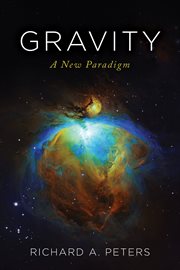Nonfiction
eBook
Details
PUBLISHED
Made available through hoopla
DESCRIPTION
1 online resource
ISBN/ISSN
LANGUAGE
NOTES
To advance a model describing attributes of nature, we are free to claim properties of the model that we believe support those attributes. Absent real experiments we can perform thought experiments to evaluate whether the assumed properties of the model support the attributes we're attempting to model. At the same time, we must consider alternative models that may also support those attributes. Our model is not validated unless we can invalidate the alternatives. Two models are examined: the familiar Newtonian model of gravity and inertia and the TI field model of gravity and inertia, which is a concept of this author. These two models differ in how matter objects interact with gravity and how each model supports the propagation of nature's force particles. Gravitational redshift is caused by time dilation of the source of radiation at the gravitational body. The redshift of the photons emitted by the source accounts in full for the measurement of redshift of those photons in a lesser gravitational field. The obverse works for the measurement of gravitational blueshift. The frequency of the photons received in a stronger gravitational field is measured to be greater than the emitted frequency because of time dilation of the receiver. The measured blueshift is illusory and is a measurement artifact. The acceleration profile about a gravitational body (GB) defines the acceleration of an object (comprising matter particles) toward the GB vs the distance of the object from the GB. The acceleration profile is not prescribed solely by the strength of the gravitational field, but depends on how an object reacts to that field. The acceleration profile is also proportional to the ratio of passive gravitational mass to inertial mass of objects in the gravitational field. However, this ratio is conspicuously absent in the equation for the acceleration profile about a GB. The actual ratio may be sequestered in the gravitational constant G itself, provided that the ratio is the same for all matter particles and objects comprising matter particles. This identity has been confirmed in numerous experiments, but an alternative model offers a compelling explanation for this identity
Mode of access: World Wide Web







